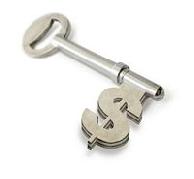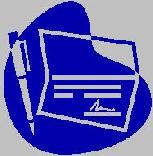
 |
|
| Financial Terms | |
| Office supplies |
|
Information about financial, finance, business, accounting, payroll, inventory, investment, money, inventory control, stock trading, financial advisor, tax advisor, credit.
Main Page: business, payroll, investment, inventory, accounting, money, credit, tax advisor, |
Definition of Office supplies
Office suppliesThe cost of the supplies used in running an office.
Related Terms:Back officeBrokerage house clerical operations that support, but do not include, the trading of stocks and Office expenseThe amount of expense incurred for the general operation of an office. chief financial officer (CFO)officer who oversees the treasurer and controller and sets overall financial strategy. SuppliesGeneral supplies used throughout a company and expensed at the time Annual fund operating expensesFor investment companies, the management fee and "other expenses," Asset-backed securityA security that is collateralized by loans, leases, receivables, or installment contracts Back feeThe fee paid on the extension date if the buyer wishes to continue the option.  Back-to-back financingAn intercompany loan channeled through a bank. Back-to-back loanA loan in which two companies in separate countries borrow each other's currency for a Back-up1) When bond yields and prices fall, the market is said to back-up. BackwardationA market condition in which futures prices are lower in the distant delivery months than in Buy-backAnother term for a repo. Discounted payback period ruleAn investment decision rule in which the cash flows are discounted at an Dividend clawbackWith respect to a project financing, an arrangement under which the sponsors of a project Expense ratioThe percentage of the assets that were spent to run a mutual fund (as of the last annual ExpensedCharged to an expense account, fully reducing reported profit of that year, as is appropriate for  Limitation on sale-and-leasebackA bond covenant that restricts in some way a firm's ability to enter into Lookback optionAn option that allows the buyer to choose as the option strike price any price of the Mortgage-Backed Securities Clearing CorporationA wholly owned subsidiary of the Midwest Stock Mortgage-backed securitiesSecurities backed by a pool of mortgage loans. Normal backwardation theoryHolds that the futures price will be bid down to a level below the expected PaybackThe length of time it takes to recover the initial cost of a project, without regard to the time value of money. Plowback rateRelated: retention rate. Sale and lease-backSale of an existing asset to a financial institution that then leases it back to the user. Stripped mortgage-backed securities (SMBSs)Securities that redistribute the cash flows from the Swap buy-backThe sale of an interest rate swap by one counterparty to the other, effectively ending the swap. Tax clawback agreementAn agreement to contribute as equity to a project the value of all previously GENERAL-AND-ADMINISTRATIVE EXPENSESWhat was spent to run the non-sales and non-manufacturing part of a company, such as office salaries and interest paid on loans. OPERATING EXPENSESThe total amount that was spent to run a company this year. SELLING EXPENSESWhat was spent to run the sales part of a company, such as sales salaries, travel, meals, and lodging for salespeople, and advertising. VARIABLE EXPENSESThose that vary with the amount of goods you produce or sell. These may include utility bills, labor, etc. ExpensesThe costs incurred in buying, making or producing goods and services. FeedbackThe retrospective process of measuring performance, comparing it with plan and taking corrective action. PaybackA method of investment appraisal that calculates the number of years taken for the cash flows from an investment to cover the initial capital outlay. Accrued expenses payableexpenses that have to be recorded in order for the financial statements to be accurate. Accrued expenses usually do not involve the receipt of an invoice from the company providing the goods or services. Depreciation expenseAn expense account that represents the portion of the cost of an asset that is being charged to expense during the current period. ExpensesCosts involved in running the company. Payroll expenseThe amount paid to employees for services rendered; synonymous with salary expense and wage expense. Payroll tax expenseThe amount of tax associated with salaries that an employer pays to governments (federal, state, and local). Prepaid expensesexpenses that have been paid for but have not yet been used up; examples are prepaid insurance and prepaid rent. Rent expenseThe amount of expense paid for the use of property. Salary expenseThe amount paid to employees for services rendered; synonymous with payroll expense and wage expense. Wage expenseThe amount paid to employees for services rendered; synonymous with salary expense and payroll expense. accrued expenses payableThe account that records the short-term, noninterest- fixed expenses (costs)expenses or costs that remain the same in amount, revenue-driven expensesOperating expenses that vary in proportion to unit-driven expensesexpenses that vary in close proportion to changes variable expensesexpenses that change with changes in either sales volume Payback PeriodThe number of years necessary for the net cash flows of an backflush costinga streamlined cost accounting method that speeds up, simplifies, and reduces accounting effort in an environment that minimizes inventory balances, requires charge-back systema system using transfer prices; see transfer payback periodthe time it takes an investor to recoup an ExpenseThe reduction in value of an asset as it is used for current company operations. Loss carrybackThe offsetting of a current year loss against the reported taxable Operating expenseAny expense associated with the general, sales, and administrative Payback methodA capital budgeting analysis method that calculates the amount of Prepaid expenseAn expenditure that is paid for in one accounting period, but which payback periodTime until cash flows recover the initial investment of the project. plowback ratioFraction of earnings retained by the firm. Current Income Tax ExpenseThat portion of the total income tax provision that is based on Deferred Income Tax ExpenseThat portion of the total income tax provision that is the result Income Tax ExpenseSee income tax provision. Back flushThe subsequent subtraction from inventory records of those parts used BackdatingA procedure for making the effective date of a policy earlier than the application date. backdating is often used to make the age of the consumer at policy issue lower than it actually was in order to get a lower premium. Back To Back AnnuityThis term refers to the simultaneous issue of a life annuity with a non-guaranteed period and a guaranteed life insurance policy [usually whole life or term to 100]. The face value of the life insurance would be the same amount that was used to purchase the annuity. This combination of life annuity providing the highest payout of all types of annuities, along with a guaranteed life insurance policy allowed an uninsurable person to convert his/her RRSP into the best choice of annuity and guarantee that upon his/her death, the full value of the annuity would be paid tax free through the life insurance policy to his family members. However, in the early 1990's, the Federal tax authorities put a stop to the issuing of standard life rates to rated or uninsurable applicants. Insuring a life annuity in this manner is still an excellent way to provide guaranteed tax free funds to family members but the application for the annuity and the application for the life insurance are separate transactions and today, most likely conducted through two different insurance companies so that there is no suspicion of preferential treatment given to the life insurance application. Asset-Backed SecuritiesBond or note secured by assets of company. Equity Buy-BackRefers to the investors percentage ownership of a company that can be re-acquired by the company, usually at a pre-determined amount. Fixed ExpensesCost of doing business which does not change with the volume of business. Examples might be rent for business premises, insurance payments, heat and light. PaybackThe length of time required for the net revenues of an investment for the net revenues of an investment to return the cost of the investment. Sale and LeasebackAn agreement in which the owner of a property sells that property to a person or institution and then leases it back again for an agreed period and rental. management expense ratio (MER)The total expenses expressed as an annualized percentage of daily average net assets. MER does not include brokerage fees and commissions, which are also payable by the Fund. Operating ExpensesThe amount of money the company must spend on overhead, distribution, taxes, underwriting the risk and servicing the policy. It is a factor in calculating premium rates. amortizationThis term has two quite different meanings. First, it may cash flow from operating activities, or cash flow from profitThis equals the cash inflow from sales during the period minus the cash depreciationRefers to the generally accepted accounting principle of allocating Pro-Forma EarningsReported net income with selected nonrecurring items of revenue or gain Related to : financial, finance, business, accounting, payroll, inventory, investment, money, inventory control, stock trading, financial advisor, tax advisor, credit. |